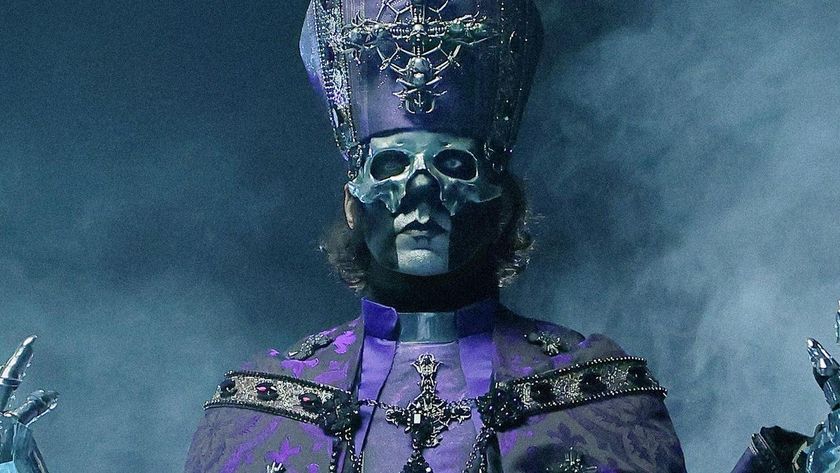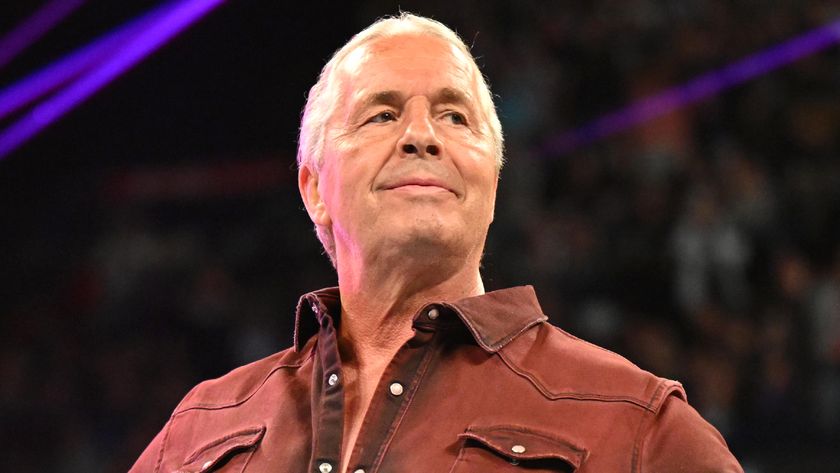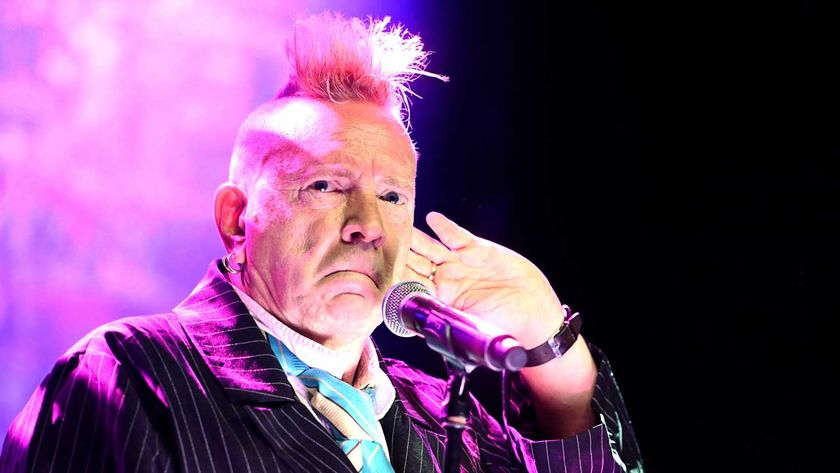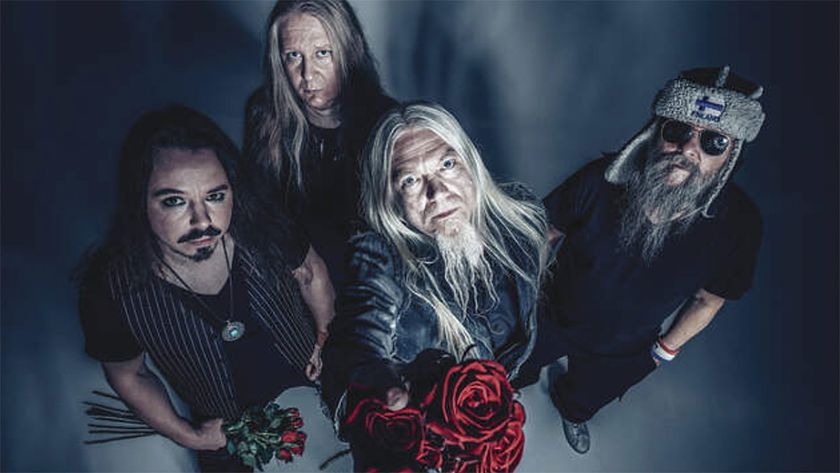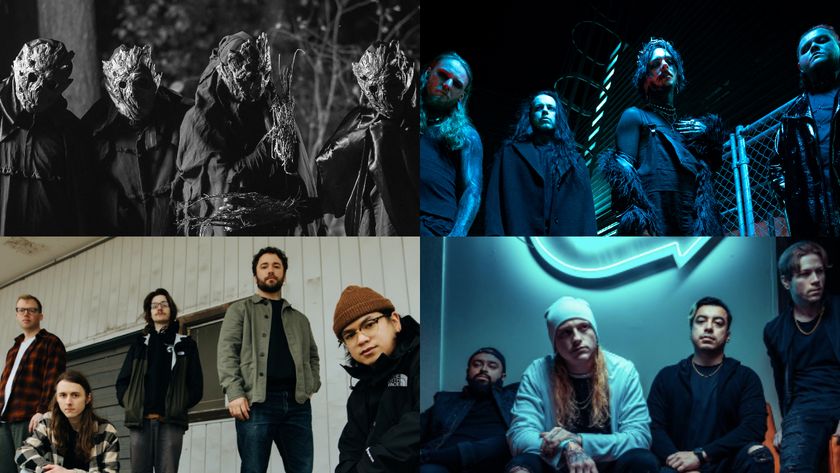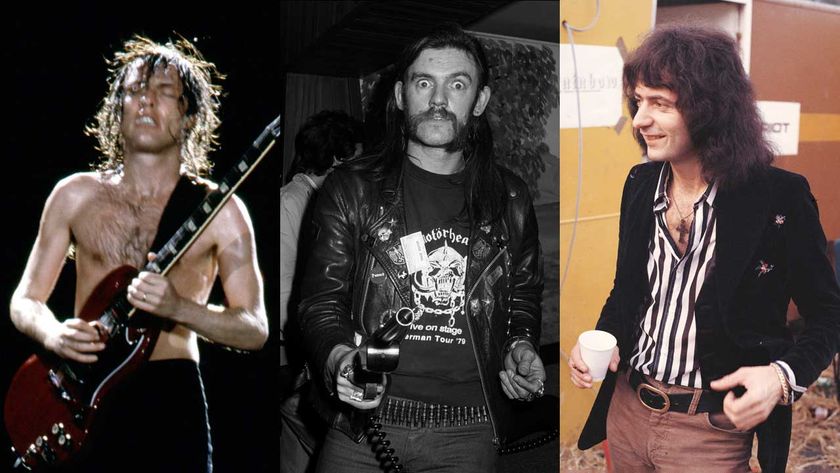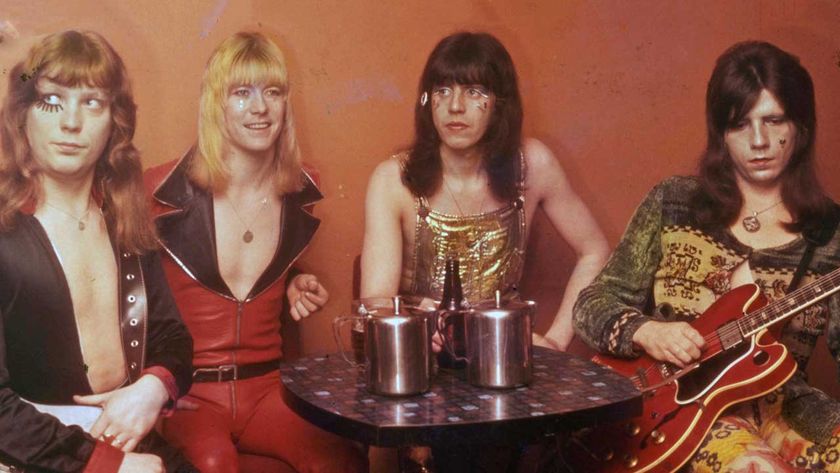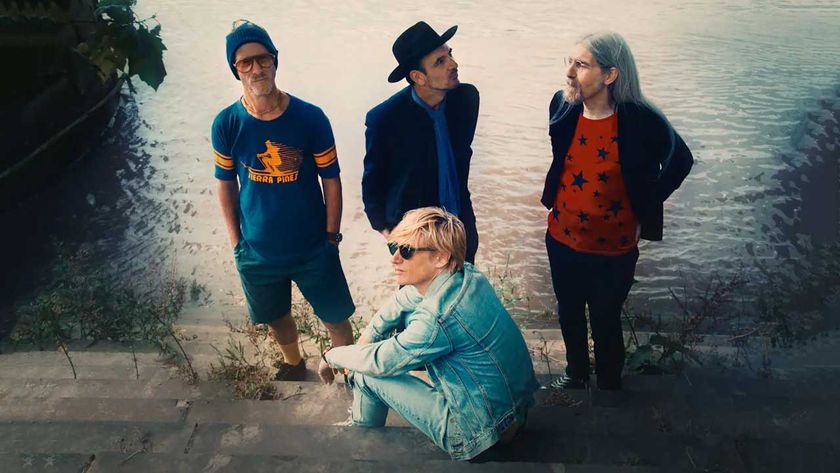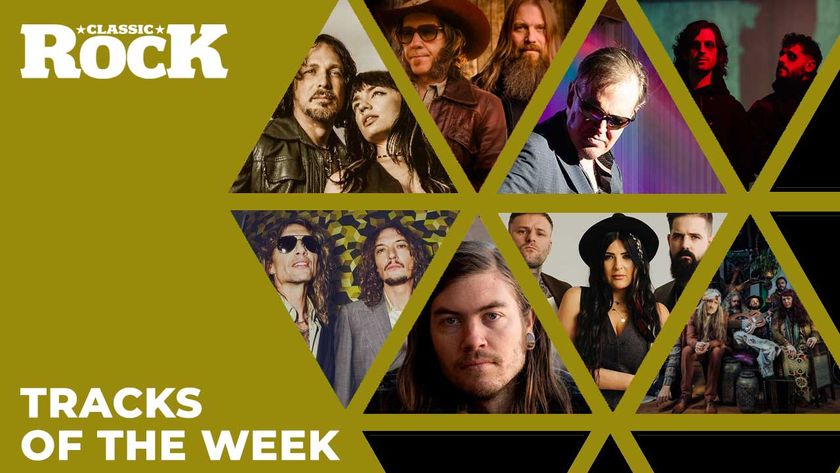60) Nightwish – Dark Passion Play (2007)
After making international headlines for the rather tumultuous manner in which Tarja Turunen was booted out of the band in 2005, Nightwish’s future looked uncertain. For a band that had started making huge strides into the metal mainstream with 2004 breakthrough Once, making a crucial album without the unmistakable pipes of one of metal’s most unique singers seemed a daunting ask.
“It was the biggest storm in the band’s history,” says keyboardist and band mastermind Tuomas Holopainen today. “But it was also very inspirational.”
If the band were galled at the task ahead of them, it certainly didn’t show, as they attacked it with the kind of fearless ambition that has since become a calling card for the Finns. Nightwish began spreading recording sessions across Europe – including what was said to be a particularly pricey, eight-day stint at London’s Abbey Road studios – bringing in an orchestra, two different choirs and numerous guest musicians for what would become the most expensive Finnish album ever made, clocking in at over 500,000 Euros.
“We definitely took a lot of risks,” Tuomas admits. “It was an exciting time and a phenomenal experience, but the scary thing was that the instrumental parts and the choir were done when we still didn’t have a singer!”
Eventually, the band would bring in Swedish AOR singer Anette Olzon, whose poppier vocals marked a substantial difference to Tarja’s operatic tones, consolidating Dark Passion Play as a massive departure on every level. And then there was the music. From the glorious, cinematic bombast of Master Passion Greed, Sahara and Whoever Brings The Night, to the syrupy glisten of Amaranth and Eva, the ballsy, no-punches-pulled F-U of Bye Bye Beautiful to the gorgeous folky balladry of The Islander, Dark Passion Play was an absolute triumph, anchored by its bold and brilliant opening gambit, 13-minute epic The Poet And The Pendulum – at that point the longest song the band had ever recorded. Almost a decade after it revitalised the band and gave them arguably their finest moment yet, Tuomas remains proud of the album’s legacy.
“I’m still really, really proud of the results,” he confirms. “The whole band was very inspired and we were all really confident about the material. The Poet And The Pendulum, Bye Bye Beautiful and Master Passion Greed were all borne out of the turmoil we’d gone through. It would be an exaggeration to say Dark Passion Play saved my life, but it definitely saved my mental health.”
It also saved the band’s career, and while the Dark Passion Play lineup would only last one further album, it still revitalised one of metal’s biggest bands and produced an absolute classic.
What We Said: “Anette doesn’t have the same vocal depth as Tarja but, simply put, Dark Passion Play proved that the latter’s dismissal was definitely a good move.”
59) Lacuna Coil – Comalies (2002)
Sumptuously ethereal with dual vocals as ferocious as they are beautiful, Comalies remains Lacuna Coil’s masterstroke, and set a benchmark for modern, gothic-tinged metal. The heady combination of stunning production and 13 flawless tracks took Cristina et al from the passionate underground of Europe to the world stage.
What We Said: “Lacuna Coil are closer to the slick, feminised metal of 1970s rock goddesses Heart than to goth forebearers like All About Eve.”
58) Every Time I Die – Ex Lives (2012)
After leaning slightly more towards Southern rock on their previous three releases, Every Time I Die went back to pure pace, utter savagery and the sound of all-out war on Ex Lives to remind us all why they remain one of the 21st century’s most vital bands. The choruses are still there, just buried under mountains of feedback, and the results are stunning.
What We Said: “Ex Lives sees ETID hurtling back to a snappier, more schizophrenic mash-up of metal, punk, hardcore and Southern-fried riffage.”
57) Nine Inch Nails – With Teeth
With the wait approaching just over half a decade, the return of NIN was a legitimate musical event. Trent Reznor responded by bringing in Dave Grohl to drum on arguably their most sonically punishing album, and writing another genuine anthem in The Hand That Feeds. It would revitalise the next chapter of NIN’s career.
What We Said: “An awesome achievement that harkens back to Reznor’s first two albums. We should be thankful.”
56) Sikth – Death Of A Dead Day
Band Pick: “Sikth are a band that do exactly what they want to do. This album was way ahead of its time, and if it came out today, it would still stand up. It’s a really special album, perfectly put together, and it’s a shame that they originally broke up after that! They’ve influenced so many bands, whether they realise it or not.” – Misha Mansoor, Periphery
What We Said: “From lounge goth, to the twisted angular punk of The Dillinger Escape Plan, to straight-ahead trad-thrash, this is almost too much for one band.”
Kvelertak – Kvelertak (2010)
Band Pick: “I’d never heard a band that took Status Quo with hardcore punk and black metal, and mixed it all together. Being another band with six members, they were an inspiration to us, but mostly it was just being struck with the fact that you could still be original and yet maintain all these styles of music. It still sounds unique all this time later.” – Simon Wright, Krokodil
What We Said: “These Norsemen have culled disparate corners from sludge, biker punk, stoner rock, blues, grunge and black metal to create something unique.”
54) Isis – Oceanic
Still in the process of exhausting its hardcore roots, Isis’s breakthrough album was a luminous rite of passage and an act of solemn, sumptuous transformation, that sounded both adrift and boundlessly accommodating. Not only did it touch a restless, post-millennial nerve, it became a holy grail for countless voyagers often cleaving to it note for note.
What We Said: “This Boston band combines the sheer art attack of The Dillinger Escape Plan with the progressive attitude of Cave In, but with a unique perspective.”
53) Parkway Drive – Ire
With their fifth album, the Aussie metallers decided to take a drastic leap into the unknown, expanding their sound to include classic metal riffs and a seething, whispered vocal style – all while turning up their trademark metalcore sound to Absolutely Crushing. Winston and co will never be the same again, and neither will the scene they’ve spearheaded.
What We Said: “It sees Parkway Drive transcend the limits of metalcore, and produces moments of spectacle that result in the best songs of the band’s career.”
52) Papa Roach – Infest (2000)
Crashing the charts and earning Coby Dick and co a Grammy nomination, Infest’s rap-metal stylings, empowering melodies and deadened lyrics captured the imaginations of a generation. As an anthem for disaffected teenagers, Last Resort takes some beating, its confessional verses and desperate chorus hitting home across the globe and becoming a classic.
What We Said: “Papa Roach are a breath of fresh air in a genre – the ubiquitous rap/metal sphere – that grows more stale by the hour.”
51) Alice In Chains – Black Gives Way To Blue
Only Axl Rose and his Chinese Democracy-era Guns N’ Roses lineup would best Alice In Chains for elapsed time between albums; indeed, a full 14 years would separate AIC’s eponymous third album from 2009’s utterly majestic Black Gives Way To Blue. In the wake of original vocalist Layne Staley’s fatal 2002 overdose, the band had elected to draw the curtain on their career with one final tour, kicking off in 2006.
“Because everything had ended so badly for us, we felt like we wanted to go out and play our music one more time, and to celebrate what we had done,” founder and guitarist Jerry Cantrell explains. To handle lead vocals, AIC enlisted William DuVall, who played guitar in Jerry’s solo band. “I thought he could do a really good job at it,” Jerry says. “He’s a lifer, like we are, so I invited him to come down and jam with us, and that was pretty much it. He sang a couple of tunes and the guys kind of looked at me and I said, ‘Yeah, he’s pretty fucking badass!’”
It was during this tour that the men started conjuring concussively heavy new material that they felt was good enough for a new album, and so, with Dave Grohl lending them his studio, they wrote what would be a triumphant fourth record. Behind the churning psychedelic sludge of Check My Brain and the primal snarl of Last Of My Kind, Black Gives Way To Blue dragged the band’s bruising, arena-sized sound into the new millennium with a stunning vitality, although the heart-opening balladry of the title track, with Elton John on keyboards, would steal the show.
“That song really set it in stone, because we had to properly address [Layne’s death] and say goodbye to our friend,” Jerry explains. “We had done it privately, but if we were going to do this, we had to do it publicly. It’s a beautiful song and it’s still really tough for me to listen to.”
Released in the autumn of 2009, the album would sell over a million copies and unfurl the colours over AIC’s comeback. “This is where we restarted as a creative unit moving forward,” muses Jerry. “We’ve had a long career, in spite of ourselves – ha ha – and we’ve been lucky to have the radio stations still play the hell out of it today. I think that means that the music has really spoken to a lot of people, and it’s become a soundtrack to a part of life, and that’s really the best you can hope for.”

